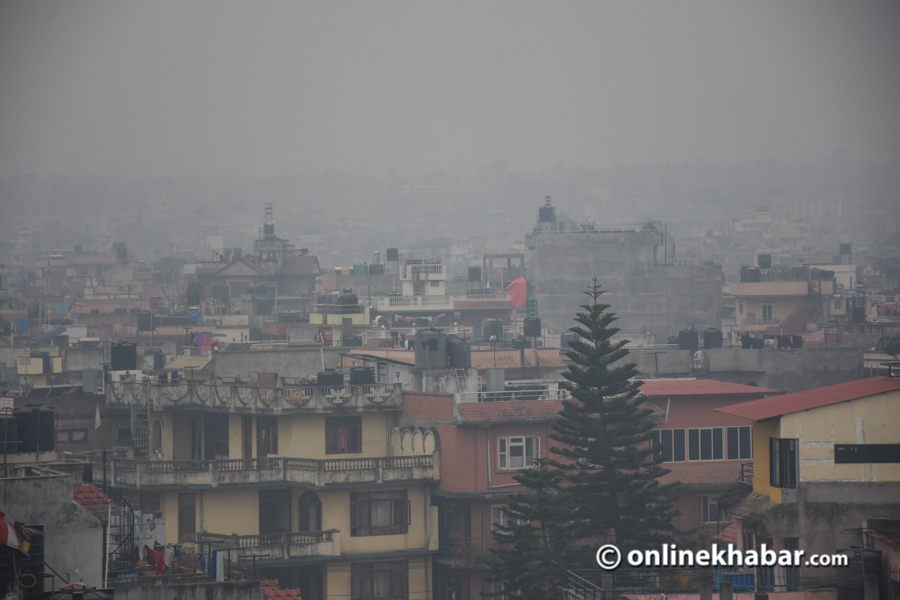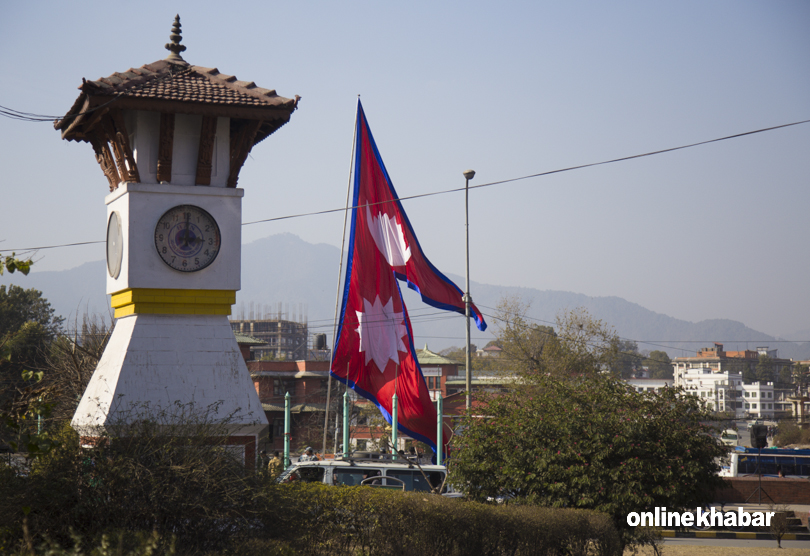
It has been more than two years since the Nepali economy has faced unique challenges, as macroeconomic indicators such as inflation, liquidity, interest rates, forex position, BOP, remittance inflow, and tourist arrival are all supportive of economic growth.
Yet the aggregate economic activities remain sluggish, marked by subdued domestic demand and lending from the banking system, mounting pressure on the government’s fiscal position, increasing youth out-migration, and growing pessimism in almost every sector of the country.
A paradox of positive indicators and economic stagnation. The failure of the government to make timely and effective capital spending can be attributed to this economic slowdown, as it has, over the period, remained a long-standing barrier to Nepal’s economic progress. However, the current economic situation has exposed the consequences of the unregulated and ineffective credit policy previously adopted by the central bank to a larger extent.
The rise of private sector credit
In recent years, the credit to the private sector from the banking and financial institutions of Nepal has reached about 95 per cent of the country’s GDP, the highest among peer South Asian Countries. The private sector seems to be over-indebted, taking into account the credit disbursed by other non-banking financial institutions as well.
The credit to the private sector has been growing with an average annual growth rate of 20 per cent until the outbreak of the COVID-19 pandemic in FY 2019/20 due to a series of expansionary monetary policies adopted by the NRB.
But at the same time, the average annual economic growth was just four per cent. During and after the pandemic, NRB responded to the crisis with an accommodative monetary policy that involved unconventional policy measures such as refinance facilities with flexible loan restructuring and rescheduling programs, along with conventional policy measures such as interest rate cuts and easing regulations.
This has amplified the credit boom and facilitated the economic recovery, as in two subsequent years the economy expanded by 4.8 per cent in FY 2020/21 and 5.6 per cent in FY 2021/22, with the growth of private sector credit of 26.3 and 13.3 per cent, respectively.
The credit boom’s dark side: Overheating and instability
This rapid credit expansion, however, came at a cost. It overheated the stock market, inflated real estate bubbles, and increased imports to a staggering 45 per cent of the GDP in FY 2021/22. The resulting pressure in the balance of payment depleted the forex reserve, exposing Nepal’s longstanding economic challenge, which is balancing the trade-off between domestic economic goals and external sector stability.
In response, NRB made a policy reversal in FY 2022/23 with decisive actions in monetary policy measures, asset classification, banking regulation, and lending practices, with a gradual phase-out of unconventional policy measures to curb credit growth and alleviate external sector pressure.
Since then the vulnerabilities of the Nepali economic and financial system have been exposed resulting in low credit demand, economic slowdown, the declining volume of trade, depletion of government revenue, the downturn in the real estate market, and growing serious problems in the financial system including rising credit default, non-performing loans and assets, fraud and non-professional activities along with the collapse of several saving and credit cooperatives.
A classic boom-bust cycle
Nepal’s experience reflects a classic credit-induced boom-bust cyclical pattern, a situation that arises when credit expansion becomes too fast. That means when such a credit boom is too fast, it often flows disproportionately towards household and non-tradable sectors such as construction, real estate, and services and increases credit supply to riskier borrowers.
This boosts household demand rather than enhancing the productive capacity of the economy, sowing the seeds of financial instability through the accumulation of systemic risks, increased leverage, and asset price bubbles that will ultimately end in a bust, amplifying the business cycles.
If we look at the sectoral distribution of private sector credit of the BFIs, around two-thirds of the total credit is found to be allocated towards the non-tradable sectors whose productivity is very low compared to tradable sectors.
Likewise, more than two-thirds of the credit is secured by mortgaging the land and buildings. In this situation, the slowdown of the real estate market put undue pressure on the BFI’s balance sheets and profitability, with increasing non-performing loans.
Lessons from history
Historically, several credit booms ended in busts and subsequent financial and economic crises worldwide, including the Nordic Crisis, the Japanese Banking crisis in the early 1990s, and the most notable Global Financial Crisis (GFC) of 2007/08.
The GFC was preceded by a rapid expansion of credit that ended in the collapse of the housing market and the subsequent economic recession. Recent empirical evidence has also shown that the excessive rise in credit leads to financial crises and economic recessions that also persist for longer than normal economic recessions- a similar pattern now Nepal is now facing.
Monetary policy dilemma: Growth vs stability
The cautious and restrictive policy measures adopted by the NRB from FY 2022/23 have helped to maintain the price and external sector stability, but also resulted in an economic slowdown and increased risk of financial instability.
In an attempt to stimulate the economy, NRB gradually eased out the policy measure by cutting off the policy rates, which has also resulted in declining deposit and lending rates of the BFIs. But further easing out the monetary policy could again put undue pressure on the external sector.
In this scenario, the policy space available for monetary policy to stimulate economic activities remains quite low. Rather, it should focus on maintaining financial stability by preventing the contagion effect of recent build-up in the financial sector to the border economy through an optimal mix of monetary and micro-macroprudential policies while promoting quality and productive utilization of credit rather than growth.
The way forward
With monetary policy constrained, the responsibility falls on the government to stimulate and revive the economy. Fiscal stimulus, along with long overdue structural and institutional reforms, is critical to boost domestic economic activities.
This credit boom gone bust underscores a vital lesson: unchecked credit expansion may deliver short-term gains, but at the cost of long-term instability. Sustainable growth demands a balanced approach, one that prioritizes quality investment over reckless borrowing.




















